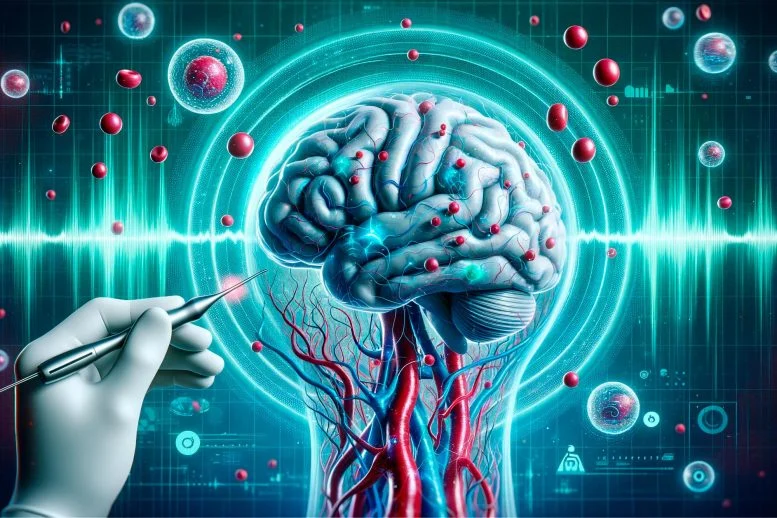Ultrasound systems can also revolutionize medical work.
The ultrasound helmet can observe blood flow in the brain while a person operates in real-world situations. That kind of system can create images and help predict possible blood flow anomalies in the brain. If one system has multiple uses that makes it more effective.
3D scanning ultrasound sonar systems are tools. That can create 3D images of the inner organs. A functional ultrasound system (fUS) is used to operate as the BMI (Brain Machine Interface) sensor system. As I wrote in the last text. The use of ultrasound-based systems in the BMI cuts unnecessary data away from the control system.
If the receiving system must filter no-relevant or unnecessary data away from data flow it requires a hard operating system. That makes the system The EEG-based systems input too much data to a computer, and too accurate data makes things like welding robots slow, and the fact is, that all robots must not have the ability to work as surgeons.
***********************************************************
ETH Zurich researchers have shown for the first time that microvehicles can be steered through blood vessels in the brains of mice using ultrasound. They hope that this will eventually lead to treatments capable of delivering drugs with pinpoint precision.
*A technology developed at ETH Zurich over the past few years for controlling microvehicles using ultrasound also works in the brain, as researchers have now been able to show.
*These microvehicles are gas bubbles, which are harmless and dissolve once their job is done.
*In the future, these microvehicles could be equipped with medications and deliver them to specific points in the brain. This may increase the efficacy of the drugs and reduce their side effects.
(ScitechDaily.com/Brainwave Riders: How Ultrasound Microbubbles Could Change Medicine)
"Scientists have developed a novel family of polymers that effectively kills bacteria, including E. coli and MRSA, without causing antibiotic resistance. This breakthrough, involving multidisciplinary collaboration, marks a significant step in addressing the public health threat posed by superbugs. Credit: SciTechDaily.com" (ScitechDaily.com/Bacteria-Killing Marvel: Scientists Develop Polymers That Defeat Antibiotic-Resistant Superbugs) The problem is how to get those polymers near bacteria. And ultrasounds can be one of the solutions.
*********************************************************
But the functional ultrasound system (fUS) can also operate as the controller that drives medicals, like new nanotechnical polymers and nanobubbles to the right points. The new nanopolymers are like springs that go inside bacteria. And then the bacteria's enzymes launch that spring, which destroys the bacteria cells by cutting their protein shells. The system can drive those polymers to the right point using sound impulses.
Another tool that is mentioned is the so-called nano-and microbubbles. Researchers at the ETH Zurich, the University of Zurich, and the University Hospital Zurich have researched ultrasound-controlled micro-size gas bubbles to detect anomalies in the brain. Ultrasound systems are more effective tools than magnetic fields because those systems don't need magnetic material for interactions.
Those micrometer-sized bubbles can brought to the body from outside or the system can create them in the blood vessels. The system can adjust the size of those bubbles and that helps the use of them to open blood vessels. The nanobubbles can also destroy bacteria. In some visions, the genetically engineered bacteria carry a small ultrasound system and it can create those bubbles using fast spinning fibers. The "local" ultrasound system can control those bubbles with extremely high accuracy.
In the future, the ultrasound system can create those bubbles by shaking blood cells or some polymers that are in blood vessels. Nanobubbles can used to close blood vessels from the tumor. The system can also make nanobubbles by using the low pressure that impacting soundwaves are making. Those soundwaves can fill bacteria with nanobubbles, which makes them unable to operate.
https://scitechdaily.com/bacteria-killing-marvel-scientists-develop-polymers-that-defeat-antibiotic-resistant-superbugs/
https://scitechdaily.com/brainwave-riders-how-ultrasound-microbubbles-could-change-medicine/
https://scitechdaily.com/brainwave-riders-how-ultrasound-microbubbles-could-change-medicine/






No comments:
Post a Comment
Note: Only a member of this blog may post a comment.